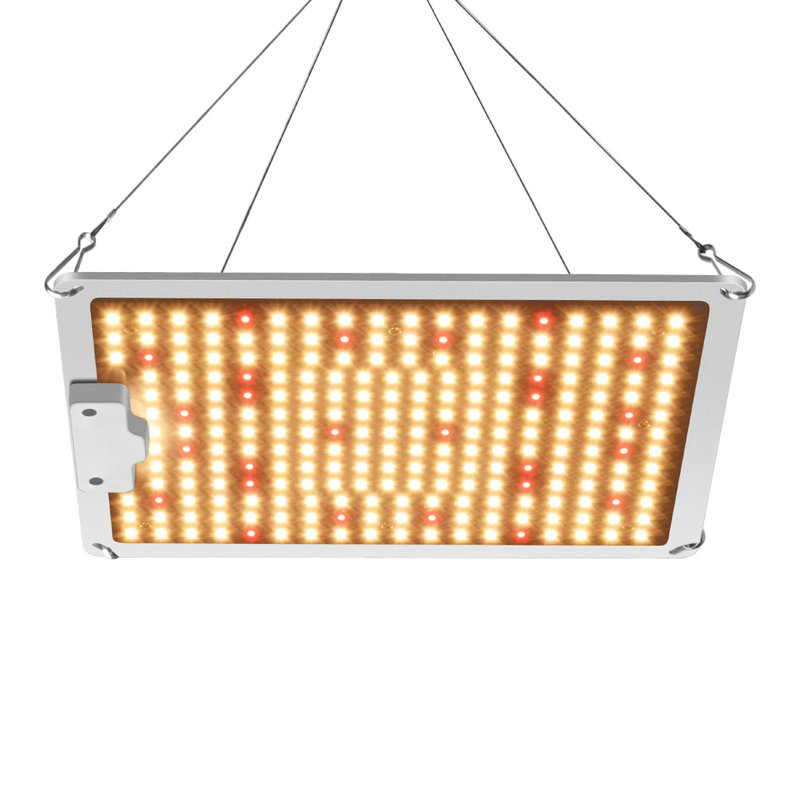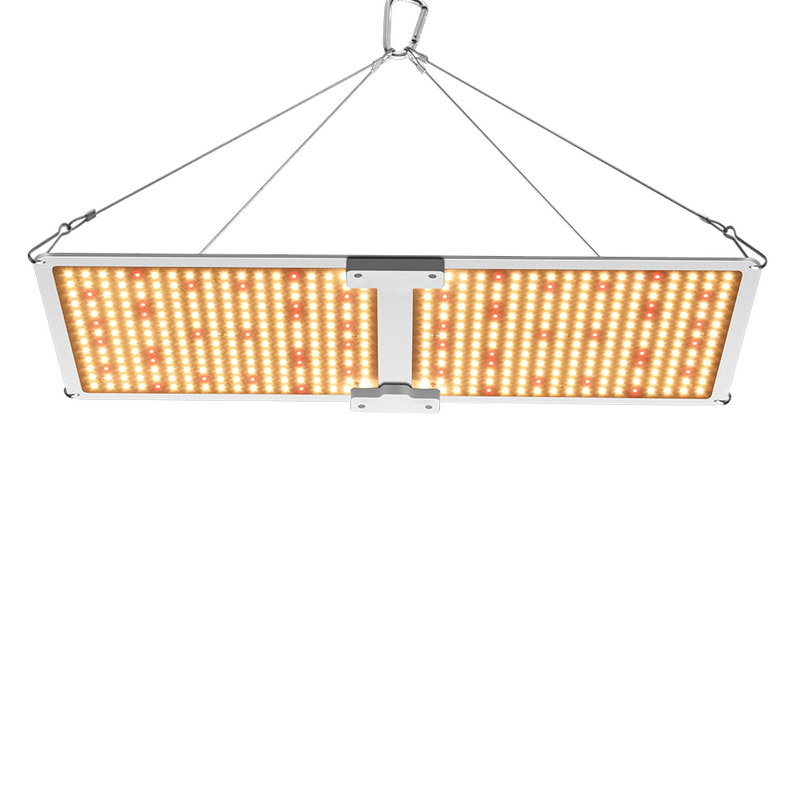How is the status for LED grow light market?
2020-10-20
LED grow light is an artificial light source that uses LED (light emitting diode) as the luminous body to meet the lighting conditions required for plant photosynthesis. According to the type, it belongs to the third generation of plant supplement light!
In an environment lacking daylight, this lamp can act as daylight, enabling plants to grow and develop normally or better.
LED grow light has strong roots, encourage growth, adjust flowering period, flower color, promote fruit maturity, color, and enhance taste and quality!
Light environment is one of the important physical environmental factors that are indispensable for plant growth and development. Controlling plant morphology through light quality adjustment is an important technology in the field of facility cultivation; plant growth lights are more environmentally friendly and energy-saving. LED grow light provides plants photosynthesis, promote plant growth, shorten the time it takes for plants to bloom and bear fruit, and increase production! In modernization, it is an indispensable product for crops.
In recent years, fully artificial light-controlled plant factories are gradually forming a new science in the semiconductor industry on a global scale, combining the technological advantages of traditional agriculture, the lighting and automation technology of the semiconductor industry, and the deep industrial foundation of network information. The factory seems to be an important application and development direction for the development of the global semiconductor industry.
The development status of LED grow light market
The sales markets of LED grow lights are concentrated in Japan, South Korea, China and the United States, Europe and other countries and regions with fewer agricultural personnel. However, with the increase in the penetration rate of LED grow lights, the Chinese market has entered an explosive period.
The plant factory originated in Denmark in 1957 due to insufficient sunlight to hinder the growth and development of plants. Later, Japan, the United States, and the Netherlands have successively invested in them. However, due to factors such as excessive cost, insufficient technology, and poor experience, they caused poor management. Until the 21st century, due to greenhouse The effect is getting more and more serious before it gets attention from all walks of life again.
From the perspective of agricultural development, modern agricultural development, due to the use of chemical fertilizers and pesticides, can rapidly increase production to supply the huge food demand generated by the rapidly increasing population, which has played a key role in solving the global food and poverty problem. However, traditional agriculture is purely dependent on the weather. Not only is the cultivation of crops restricted by the climate and seasons, and cannot be produced as planned, even if the crops are harvested, they are affected by the large quantity and falling prices; in addition, farmers use a lot of pesticides to prevent pests and diseases in order to ensure the harvest. Therefore, it has caused doubts about food safety. In order to increase production capacity, excessive use of chemical fertilizers not only increases costs, but also pollutes farmland, rivers, lakes and the ocean, and may even cause excessive nitrate content and harm consumers.
Another reason for the popularity of plant factories is that the global construction industry is eager to seek new development through investment in agriculture due to the economic downturn and the reduction of public construction projects. Chain catering and supermarket companies hope to build their own vegetable bases to form a stable supply of raw materials. Due to the gradual shift of the manufacturing sector to overseas in the electronics industry, a large number of clean workshops used for the production of precision devices such as chips have been left unused. These workshops can be transformed into plant factories with a little modification. Therefore, these three industries have become the most active pioneers in investing in plant factories.
Therefore, the high degree of automation of the plant factory, like a factory, can be planted all year round, and produce fresh and hygienic fruits and vegetables on the ground. The advantages of scientific and technological agriculture without causing environmental pollution have naturally attracted the attention of the government and academic institutions. In addition to the transportation costs saved by adopting the plant factory production model, the plant factory has the opportunity to become a real alternative to the traditional crop production model. This is why venture capital and private equity funds pay attention to the plant factory.
Population expansion and lack of water resources are major global issues. The global population is currently 7 billion, and it may increase to 9.2 billion in the next 40 years. Given that there are still nearly 1 billion hungry people, it needs to be increased by nearly 58 in 40 years. % Of the grain production capacity; but 80% of the existing arable land has been used, coupled with unfavorable factors such as the abnormal climate, the reduction of arable land, and the trend of young and strong populations leaving agriculture, the prospects are worrying. In addition, traditional agriculture uses about 87% of the world's freshwater resources, so the substantial increase in productivity per unit area and the establishment of water-saving technologies are urgent research topics.
On September 10, 2013, the National Semiconductor Lighting Engineering R&D and Industry Alliance Standardization Committee (CSAS) issued the CSA021-2013 "LED Flat Light Performance Requirements for Plant Growth" alliance standard. The standard stipulates the terms and definitions, classification and naming, technical requirements, test methods, inspection rules, signs, packaging, transportation and storage of LED flat lights for plant growth.
At present, there are many forms of LED lighting products for plant growth, such as flat panel lights, double-ended lights, flexible light strips, etc., which will gradually change with the development of technology. CSAS will gradually carry out standardization of LED lighting for plant growth in accordance with technological development, promote scientific and technological progress, and support industrial development.








